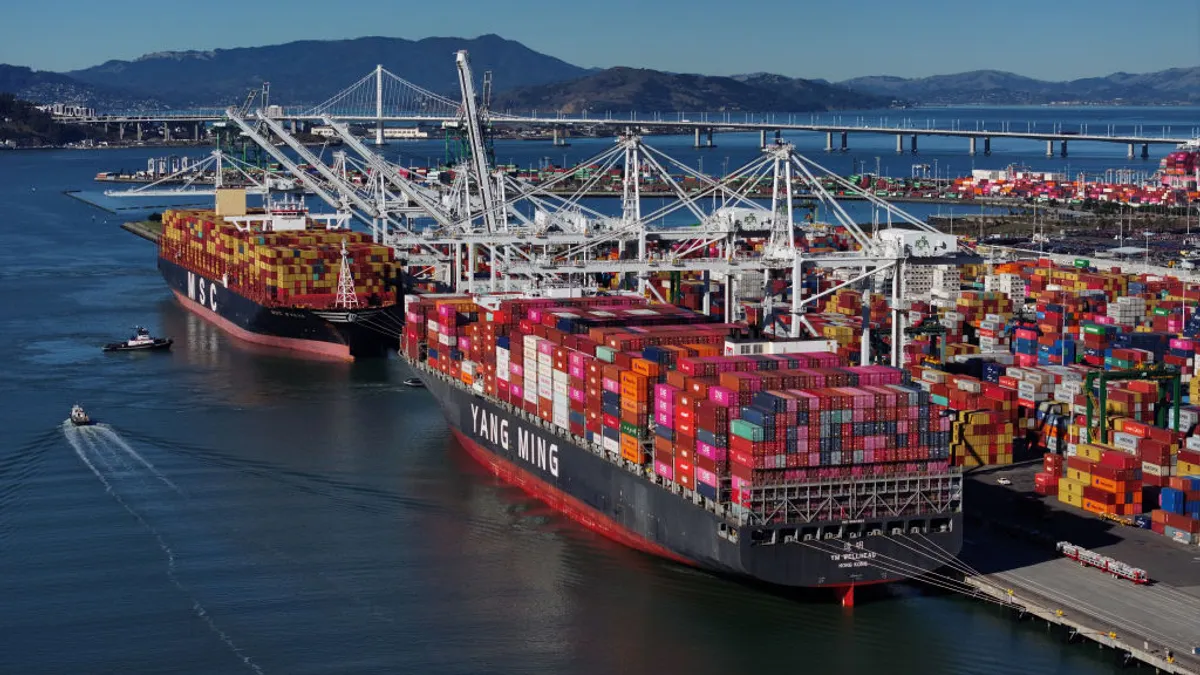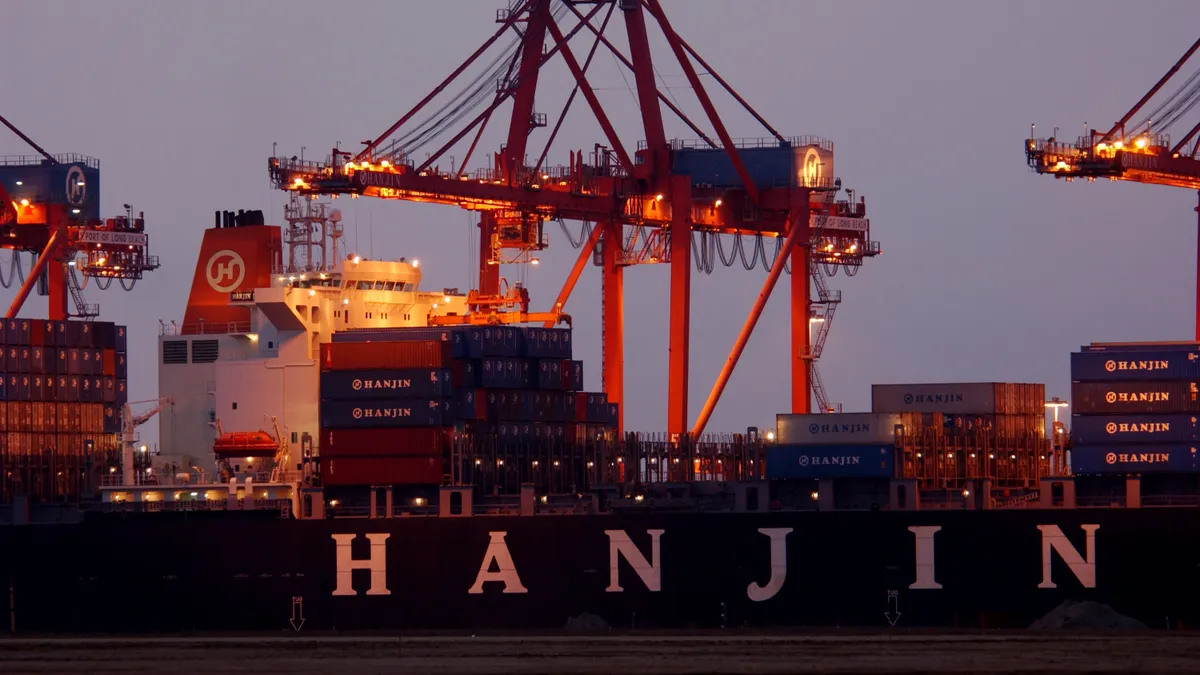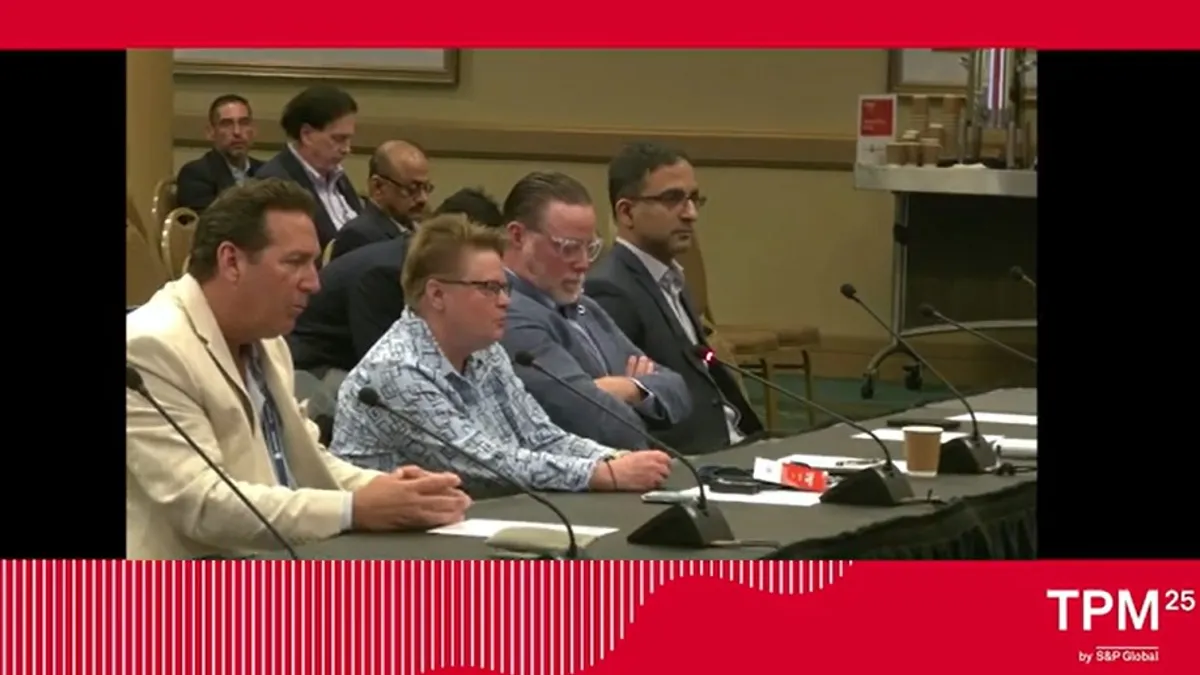For many companies, an unexpected bill for $400 million would be a crucible, if not the beginning of a tailspin. For Walmart, the world's largest company by revenue, it was a mere speed bump.
That figure, $400 million, was what the company spent on supply chain costs above management's original estimates for the fourth quarter, which ultimately yielded some $3.6 billion in net income.
For the two legacy, mass merchant giants Walmart and Target, a year of unprecedented supply chain turmoil raised costs and posed some challenges, to be sure. But their scale and vast financial resources allowed them to absorb that disruption.
Their ability to stock shelves kept Walmart and Target's sales growth strong — piled on top of surging growth for both in 2020 — and in large part helped them to offset the cost of getting goods into the country and to their stores.
Both retailers have a fine line to walk on prices, which have spiked throughout the economy with supply chain costs. To differing degrees, Walmart and Target rely on value in their brand promises to customers, to make themselves destinations. Yet they are operating in inflationary times, watching their costs increase while competitors hike prices and struggle to stock their own shelves.
RBC Capital Markets analyst Steven Shemesh said in a February note, ahead of Walmart's earnings release, that the retail giant was among the "better positioned to offset cost pressures."
That is thanks in no small measure to financial firepower. "At this point, it's well understood that Walmart has elected to eat a portion of supplier price increases to maintain low prices for customers," Shemesh said.
At the same time, Walmart and Target also pulled back on discounts and sales for customers, which also helped their bottom lines. The industry's struggles to stock inventory during Q4 and the year more generally makes it that much easier for everyone to pullback on sales promotions.
Walmart in Q4
| Net sales: | $105.3 billion |
|---|---|
| Comp sales: | +5.6% |
| Operating income: | $5.2 billion |
| Operating margin: | 4.9% |
| Inventory growth: | +18% |
Source: Walmart investor materials. Note: Except for inventory, all metrics are for Walmart U.S.
Walmart's gross margin rate increased by a "healthy" 54 basis points in Q4, which "reflecting primarily price management resulting from cost increases in mix," Walmart Chief Financial Officer Brett Biggs said in the company's February earnings call. In other words, the company did nudge prices up to manage its own rising costs.
In a world of rising prices, though, a price decrease is a competitive edge. Walmart has the deep pockets and the leverage with suppliers to do it, even now. Walmart CEO Doug McMillon during the call that it was "working closely with our suppliers to manage inflation, finding a few places where we can roll back prices."
For Walmart, price itself may not be as important as "price gaps" — the difference in price tags between Walmart and its competitors.
"We're constantly monitoring our share, our price gaps to competitors," said John Furner, chief of Walmart U.S. "And we'll continue to do that as we move forward. And then what we're seeing right now is not only gaps that we're proud of that are valuable for our customers, but we're also seeing the opportunity to increase some of our rollbacks in stores."
And while Walmart tried to navigate its pricing to maintain customer perceptions of value, its inventory position provided another differentiator. "Going into the period, some competitors appeared tight on inventory, but Walmart seemed well positioned," said analysts with MKM Partners in a note just ahead of the retailer's earnings announcement, noting that the retailer's inventory was up 11% year over year at the beginning of the period.
As with pricing, Walmart's deep pockets helped in that regard. It famously chartered ships and made many other moves, large and small, to ensure it was stocked for the holidays.
Walmart has also taken a few pages out of rival Amazon's playbook and developed a few side hustles that during the quarter and year helped buffer its bottom line from supply and freight cost increases. Its advertising business passed $2 billion dollars, while its membership revenue (which includes both its Sam's Club and Walmart+ memberships) added billions more.
The retailer has also launched third-party fulfillment and delivery services it is selling to other retailers and brands. Walmart Fulfillment Services grew 500% last year, as the company looks to increase the seller base to its online marketplace while also giving those sellers a reason to spend advertising dollars with the company.
Target, meanwhile, was similarly able to use its size and scale to grow its sales and navigate supply chain turmoil. The retailer's comps rose 8.9% in the fourth quarter and 12.7% during the fiscal year. And even as it absorbed higher freight, supply chain and merchandise costs, its operating profit and margin rate grew thanks to higher sales.
Target in Q4
| Net sales: | $31 billion |
|---|---|
| Comp sales: | +8.9% |
| Operating income: | $2.1 billion |
| Operating margin: | 6.8% |
| Inventory growth: | +30.5% |
Source: Target investor materials.
Target did not say how much it spent on supply chain cost increases. But the company also navigated them through its merchandising mix, presumably emphasizing higher-margin goods, and held back on customer promotions. While the retailer is willing to slow its discounts, it appears hesitant to raise prices more than needed.
"We have many levers to combat costs, and price is the one we pull last, not first," Michael Fiddelke, Target chief financial officer, said during a recorded investor call last week. "As a result, product costs within our assortment have risen faster than retail's in recent quarters, reflecting this intentional approach and deliberate pacing. We expect this trend to continue, particularly in the first half of this year as we maintain our focus on affordability for our guests."
The retailer, along with Walmart, touted its agile supply chain as the holiday period began and talk of a crisis started filling the news. Target hired en masse for its supply chain, moved containers to bypass the congested Long Beach and Los Angeles ports, increased night pickups, and ran its supply chain operations 24-hours a day, among other efforts.
"We have the global scale to keep the product people want and need moving through our pipeline," CEO Brian Cornell said during the investor call.
Yet, Neil Saunders, managing director of GlobalData, pointed to product shortages, including in holiday decorations and sundries, during the period.
Saunders told Retail Dive in an email that some Target shops were "looking spartan towards the end of the period." But Saunders also noted that "with supply chain issues affecting all retailers, Target was not alone in this and given the elevated demand it faced, we believe it handled the holiday period very well."
























